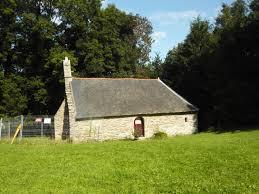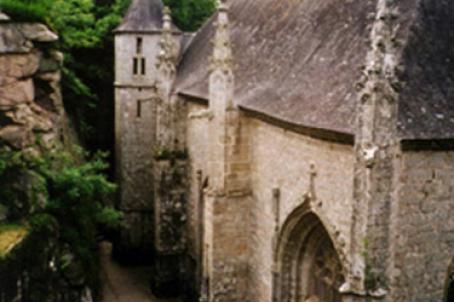Chapel Saint-Gwenaël
The chapel of Saint-Gwenaël (or Saint-Guenaël) is located in Moëlan-sur-Mer (Kermen), in Brittany. Built on the site of an old oratory, the building dates from the 18th century. It was restored in 1954. Currently, the chapel, which is nestled in a charming natural and green setting, is visible only from the outside.
About this building
The Saint-Gwenaël chapel (or Saint-Guenaël) is located in the fishing village of Moëlan-sur-Mer (Kermen) in Brittany. Nestled in lush greenery, it was built on the site of an ancient oratory with stones from previous chapels. Destroyed and rebuilt several times, the current building dates from the 18th century. Its roof was restored in 1954.
The chapel, with a rectangular floor ending in a three sided chevet sides, is surmounted by a domed bell tower. Currently visible only from the outside for security reasons, visitors sadly cannot currently admire various objects such a cross of Christ on the beam of glory, three boats ex-voto, a Madonna and Child, a statue of Saint Corentin and one of Saint Guénaël with a book, crozier and monastic tonsure.
The faithful invoked Saint-Guénaël to obtain beautiful harvests, rain or to "walk" the children, cure them of the "toque" or reduce their mental afflictions. They offered him seeds, hats and children's dresses then sold at auction.






